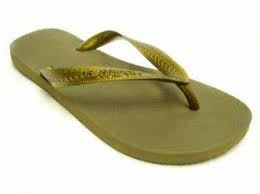Confessions of A Shoe-A-Holic: The Dangers Of Flip Flops
Summer is the perfect time for the flip-flop, and while they were once reserved for the beach and around the pool, they have become trendy again with brands like Haviana creating a myriad of looks for any occasion.
But with summer nearing its final days, why not know the bleak truth about your favorite pair of rubbers? While it may seem to be the perfect choice for lazy days, beach days and late mornings, this slippery shoe has more risks than the eye may see.
The flip-flop has never been a favorite of foot physicians worried about the long-and- short-term effects of movement on the foot, leg and ankle. Flip-flops can actually change the way the wearer walks, linking its perils to the same concerns surrounding your favorite pair of strappy stilettos.
Being a flat shoe, the flip-flop is not good for the arches and has poor support, which could potentially lead to ankle injuries. Since your foot can slip in and out, wearing flip-flops can

According to a story published in Newsweek, Justin Shroyer, a doctorial student in biomechanics at Auburn University, and Dr. Wendi Weimar, the director of Auburn’s biomechanics laboratory, began a study after seeing some students come back from summer vacation complaining of foot pain. Upon realizing that these same students were ardent flip-flop fans, Shroyer and Weimar began to analyze the correlation between the pain and the footwear.
Shroyer brought in 39 college-age male and female volunteers. The participants wore flat-soled, thong flip-flops and then regular tennis shoes while walking on a platform that measured the force as their feet hit the ground. The students were also filmed so Shroyer could see the difference in movement in their knees, ankles, feet and toes.
According to the study, flip-flop wearers take shorter steps than those un-coaxed by the liberty of them. There is more stress on the body since the wearer has to take more steps to move the same distance as someone wearing a different kind of shoe, resulting in muscle and joint pain.
“When you wear flip-flops, you kind of scrunch your toes to keep the flip-flop on your foot,” Shroyer told Newsweek. This causes soreness in the toes and potentially turns off the muscles that bring our toes up.
This study was not the first warning of flip-flip use.
In 2007, the American College of Foot and Ankle Surgeons reported an increase in heel pain among wearers, especially in the spring when people switch from sturdier shoes.
CNN also recently addressed the flaws of flip-flops. According to Dr. Kathya Zinszer, securing the biomechanics of your foot is the most important thing to consider when choosing a shoe. For that reason, rubber flip-flops can be even more dangerous than trying to do something barefoot.
Dr. Zinszer advises that we pick wisely, consider all risk factors and understand when certain shoes are appropriate. She says flip-flops in the gym protect you from organisms in the shower but will only cause pain and discomfort if used when hiking.
So do you need to rule out the flip-flop from your foot wardrobe forever? Not necessarily.
Like the high-heel (and most other things), flip-flops in moderation are okay.
The main takeaway is to not wear flip-flops everyday. If you’re experiencing any pain, switch to another shoe and let your feet recuperate. Finding sandals with more support can be another alternative but give you a similar look and feel.
Reach reporter Nicole Shoohed, here.



